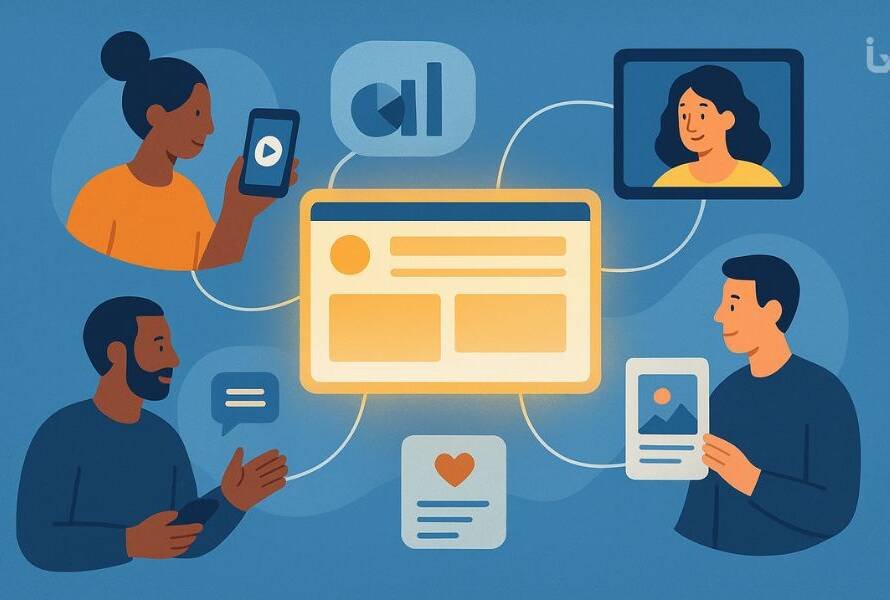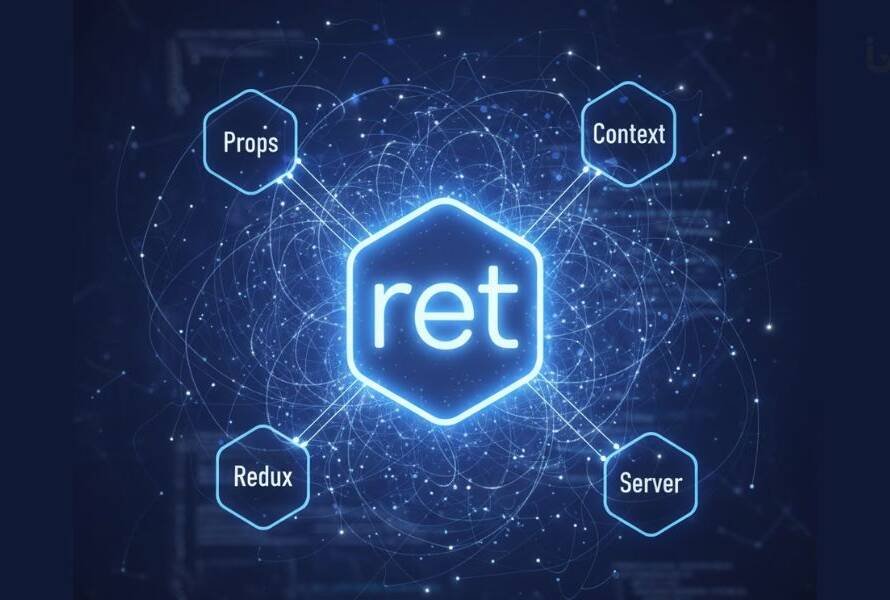In today’s fast-paced digital world, your customer’s experience can make or break your business. While most companies understand the value of customer service, the real magic happens when you blend technology with empathy. That’s where Artificial Intelligence (AI) and chatbots come in. When used strategically, these tools can enhance every interaction your customers have with your brand—making it more personal, efficient, and delightful.
In this guide, we break down how you can leverage AI and chatbots in simple, actionable ways that anyone can understand—with real-world examples to bring it all to life.
Personalization at Scale: Make Every Customer Feel Seen With AI and Chatbots

AI-Powered Customer Segmentation Think beyond age and geography. With AI, you can analyze browsing habits, shopping history, and even emotions to create unique customer segments. Imagine knowing who loves discounts vs. who shops based on eco-friendliness—and crafting messages for each.
Example: A clothing brand uses AI to recommend sustainable fashion pieces to eco-conscious shoppers while promoting discounts to deal-seekers.
Dynamic Website & Email Personalization Your homepage doesn’t have to look the same for everyone. AI can tailor website layouts and email content based on what a user has previously browsed or clicked on.
Example: Netflix-style personalization where the home page shows different banners based on what genres or topics a user interacts with most.
Recommendation Engines Used by giants like Amazon, AI-powered engines can suggest the right products or content at the right time, increasing both relevance and conversions.
Example: Spotify suggesting a new playlist based on recent listening trends.
Proactive and Instant Support: Be There Before You’re Needed

Smart Chatbots for 24/7 Help AI chatbots aren’t just auto-repliers. They understand questions, context, and tone. They can book appointments, solve issues, and provide product info—all without delay.
Example: A hotel chatbot helping guests check-in early or book spa services instantly.
Behavior-Based Proactive Messaging Triggered messages based on user behavior can turn hesitation into action.
Example: A chatbot popping up when someone lingers on the pricing page, offering to explain packages or give a discount code.
Sentiment Detection for Smooth Escalation Some customers are just having a rough day. Sentiment analysis helps bots detect when someone’s frustrated so they can transfer the conversation to a human before things go south.
Example: A bank chatbot recognizes a distressed tone and routes the customer directly to a live agent for a sensitive query.
Frictionless Customer Journeys: Remove the Guesswork

AI-Powered Site Search & Navigation Let AI interpret fuzzy search terms to help people find exactly what they need, even if their phrasing is off.
Example: A user types “cheap blue shoes for jogging” and gets filtered results with relevant discounts.
Predictive Customer Support By analyzing previous customer data, AI can forecast what help someone might need before they even ask.
Example: A telecom company sending proactive tips to users who just upgraded their phone plan.
Chatbots for Onboarding Turn complicated setups into easy guided experiences.
Example: A SaaS tool using chatbots to walk new users through account setup and basic features.
Supercharging Human Agents: The Best of Both Worlds

AI for Agent Assistance AI can pull up relevant answers, past interactions, and auto-fill forms while the agent chats live with a customer.
Example: An agent instantly sees a customer’s order history and shipping details without switching tabs.
Call Routing and Voice Assistants Send callers to the right person the first time. Voice AI can answer common questions and escalate others based on keywords and tone.
Example: A voice bot directing customers with billing issues to the finance team, while handling FAQs itself.
Data-Driven Insights for Continuous Improvement

AI Feedback Analysis Don’t just read reviews—understand them at scale. AI can spot trends in complaints or praises across emails, chat logs, and social media.
Example: Discovering that most complaints come from one region after a service update.
Chatbots for Real-Time Feedback Collection Right after an interaction, bots can ask customers for quick feedback.
Example: “Was this helpful?” pop-ups that feed directly into your CX dashboard.
Customer Journey Mapping with AI Understand where users drop off, what they click, and how long they take on each page.
Example: An eCommerce brand notices users leave the site on the shipping info page—and simplifies it.
Key Considerations for Getting It Right
- Privacy First: Use data responsibly and follow data protection laws.
- Integrate Seamlessly: Ensure your AI/chatbot works well with your existing CRM and tools.
- Keep Humans in the Loop: Always offer easy escalation paths to a human.
- Keep Improving: Regularly train your AI models with new data.
- Transparency Matters: Let customers know when they’re talking to a bot.
Final Thoughts: The Future of CX is Smart, Human, and Empathetic
AI and chatbots aren’t about removing the human element. They’re about enhancing it—making your business faster, smarter, and more in tune with what your customers need. When done right, you’re not just improving customer experience—you’re building trust, loyalty, and long-term relationships.
Ready to create an AI-driven customer experience strategy that feels human and intuitive? Reach out to the IxD Hub team via our Contact Form or send us a message on WhatsApp. Let’s build something exceptional together.
Frequently Asked Questions (FAQs)
1. Will AI and chatbots replace human customer service agents?
No. They’re meant to handle routine tasks and free up human agents for more complex or emotional queries.
2. How expensive is it to implement AI and chatbots?
It varies. Many scalable solutions exist for businesses of all sizes, from plug-and-play chatbot tools to fully custom AI systems.
3. Are customers comfortable talking to bots?
Yes, as long as the experience is seamless, helpful, and transparent. People value speed and efficiency, especially for simple tasks.
4. What kind of businesses benefit from using AI in CX?
Almost every industry—retail, healthcare, banking, travel, education, and SaaS—can benefit by improving responsiveness and personalization.
5. How do I know if my chatbot is performing well?
Monitor KPIs like resolution rate, customer satisfaction (CSAT) scores, average response time, and engagement metrics.




